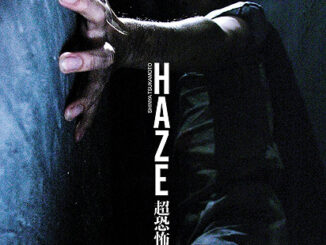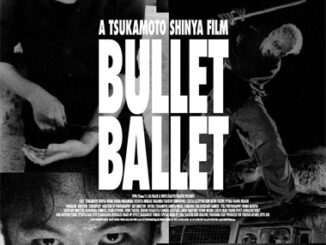Hokage, Shadow of Fire (2023)
Directed by: Shinya Tsukamoto
Written by: Shinya Tsukamoto
Starring: Hiroki Kono, Mirai Moriyama, Oga Tsukao, Shuri
Available now on Third Window Blu-ray and to Stream
While his earlier films are full of anxiety about urban landscapes, technology, and a whole lot of repressed urges, Shinya Tsukamoto’s recent projects have expressed other concerns. Together with Fires on the Plain and Killing his latest film forms a kind of anti-war trilogy; the manic energy being replaced by a darker more contemplative mood, suggesting his feelings about the fears of audiences today. That this is another period drama is secondary to the emotional content of the story; the message is intended to be evergreen. But how successful is this as a human drama on its own terms? Let’s take a look at how all of these sombre ingredients come together.

Although this is a story about post war Japan there are few details to suggest a 1940s setting. Characters talk about their old lives before being drafted, or about the atrocities they were involved in, and occasionally period uniforms or props are seen. But on the whole this could be any time or place; a scenario that often feels post apocalyptic. If Godzilla: Minus One offered a look at the decade with an eye for reconstruction and progress this is a film about how fragile things really are in such an era. It suggests that for some survivors there may be no going forward during a time in which loss, poverty, and disease, are rampant. The spirit of those left behind may be resilient but human nature itself always has a darker side.
This is clearly something a nameless bar tender turned prostitute (Shuri) is living with. In fact most of the characters have no identities; names are a thing of the past. Who they were is no longer important and now only survival matters. Only one of the locals is ever named and this is to emphasise his connection with those who lost their lives. Meanwhile, beyond her pimp, the few regular visitors are a boy thief (Oga Tsukao) and a maths teacher turned soldier (Hiroki Kono). There is a sense that at any moment these broken figures could put together their resources and form an adoptive family. But this isn’t that kind of story and soon things like post-traumatic stress and other deep rooted problems surface.
Some of these characters may be good people at heart but there’s an overriding sense that trouble is brewing inside them all. The soldier claims to be looking for work, the boy says that he’s not stealing, and the woman becomes attached and tries cooking and sewing. But this is a more complicated reality than any wholesome montage can fix. Their secrets, some that appear in restless sleep or panic attacks, others hidden in literal closets, are always waiting to break their domestic stability like so much broken glass. The soldier in particular is a pathetic figure ready to have a breakdown without warning. It’s this mixture of uneasy tension and normal life that makes the movie so engaging; the clichés are a facade.

The potential for violence at any moment is firmly symbolised by a pistol the boy brings home one day. It’s hidden in a steel container but is always a present threat. It also lures an adult thief, Shuji, (Mirai Moriyama) into the situation. He wants the boy, and the gun, for a few days of ‘work’. The danger isn’t worth the reward for the woman, who has her own strong fear of loss, but things soon break down and she is left alone. Of course it’s a very dubious proposition but things are never what they seem. On the outside the thief is amoral and energetic, adding a welcome jolt of life to the narrative; but his own dreams and his behaviour towards an imprisoned man on the road betray his true nature.
Visually the film also suggests a world that was once whole but has been damaged; the tavern is burnt and surrounded by broken roof tiles. Those without stable work or families are thin and twitchy. The woman even remarks that the boy is impossible to clean since he is also stained by soot. The one caveat is that this seems to be the woman’s story but is a tale of two halves; the boy’s time with her and then with the thief. Structurally it’s refreshing as he ventures beyond the tiny room; it’s a low budget affair and the claustrophobic film has scant locations, but it’s also disjointed, and sometimes stifling, without a main point of view character. Perhaps Shuji could have been introduced earlier, or he could have known the former teacher.
Still, there is continuity in a story where all of these traumatised survivors are never predictable. The woman tells her would-be son to live his best life but such trite ideals are fleeting. Emotional turmoil is bubbling under the surface just as beneath the town dying people hide in old tunnels. Which of course brings this period piece back to a universal message; crime and sickness are perennial concerns. The result is a touching story with great performances from everyone involved, but it’s also a dour affair with shocking moments along the way. Tsukamoto may be saying that there’s hope for the future but it feels uncertain in a world where human beings are so easily reduced to commodities. In the end it’s a complex and compelling work; one of his most optimistic but also one of his darkest.
THIRD WINDOW BLU-RAY SPECIAL FEATURES
Limited Edition slipcase version:







Be the first to comment